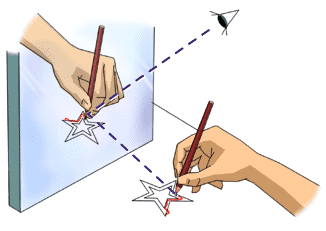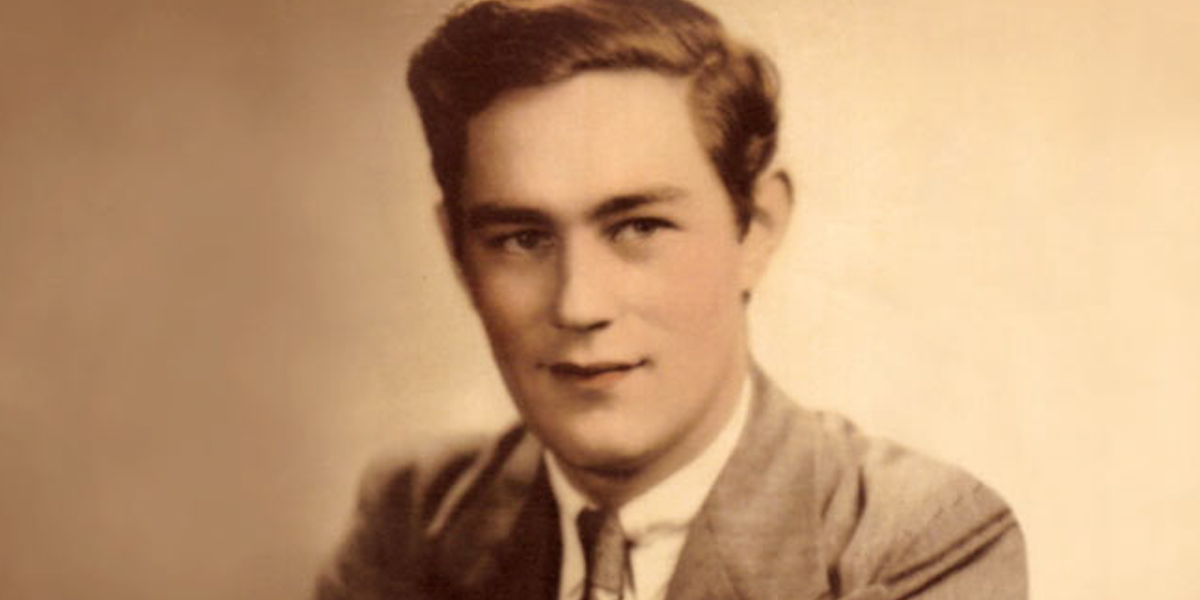When twenty-seven year old Henry M. entered the hospital in 1953 for radical brain surgery that was supposed to cure his epilepsy, he was hopeful that the procedure would change his life for the better. Instead, it trapped him in a mental time warp where TV is always a new invention and Truman is forever president. The removal of large sections of his temporal lobes left Henry unable to form any new personal memories, but his tragic loss revolutionized the field of psychology and made “H.M.” the most-studied individual in the history of brain research.
Henry grew up outside of Hartford, Connecticut, and was by all accounts an amiable young man with above average intelligence. He liked to go ice skating and to listen to mystery shows on the radio, which he enjoyed because he could often deduce the villain ahead of the program detective. Then on his sixteenth birthday, Henry had his first grand mal seizure during a celebratory trip to the city with his parents. After that point, the paralyzing seizures arrived with increasing frequency, until by the summer of 1953, he was experiencing as many as eleven episodes per week. He was unable to hold a steady job, and his prospects for independent living seemed dim. There were not many effective treatments available for epilepsy in 1953, so it was with a mixture of hope and trepidation that Henry’s family turned to Dr. William Scoville and his experimental surgery.
The Fateful Surgery
The idea behind the surgery was simple. Seizures, as Scoville correctly reasoned, are caused by uncontrolled electrical impulses that start in a localized area and then spread throughout the rest of the brain. If one could remove the part of the brain where the seizures originated, it should be possible to cure the epilepsy. Henry had the most common form of the disease, called temporal lobe epilepsy, which meant that his seizures began in the tissue located on either side of his brain. Dr. Scoville removed a large chunk of Henry’s right and left temporal lobes, which was a crucial decision because the brain is symmetrical and thus most important structures are duplicated. Altogether, Henry lost about a fist-sized portion of his brain, which encompassed (on both sides) the hippocampus, the amygdala, and the entorhinal and perirhinal cortices. As it turns out, the hippocampus is crucial for memory storage. When he lost his hippocampi, Henry became frozen in 1953, remembering very well the events before his operation but unable to create any new memories. He describes the experience like this:
“Right now, I’m wondering, have I done or said anything amiss? You see, at this moment everything looks clear to me, but what happened just before? That’s what worries me. It’s like waking from a dream. I just don’t remember.”
What Henry Can Remember, And What He Cannot
At the time of Henry’s surgery, the study of memory was mostly limited to philosophical writings and introspective probing like the kind practiced by Sigmund Freud. In the 1930s, Karl Lashley began a systematic quest to find the exact location of memory in the brain. He taught rats and monkeys a variety of tasks, then destroyed a part of their brain, reasoning that if the animals could not remember after the lesion, then he must have found the place where memories reside. After years of frustration, Lashley concluded that nothing short of near complete destruction of the brain caused the animals to forget their tasks, and it seemed that biological study of memory was not possible.

Then word began to spread of patient H.M., who had very localized brain damage but extreme memory deficits. Scientists were very interested in the precise nature of Henry’s amnesia and began a careful study of which parts of his memory had been erased by the surgery and which parts remained intact. As noted before, he had good recall of facts learned before his operation, meaning that his long-term memory was unharmed. Also, Henry was able to hold information in storage for very short periods of time. Most people can retain about seven pieces of information (a telephone number, for example) in memory for about thirty seconds, and Henry scored normally on these kinds of tasks. Thus, his working memory (or scratch-pad memory) seemed unaffected by the loss of his hippocampus. The main problem for Henry was converting short-term memories into permanent storage, a process called consolidation.
Based on the patterns of Henry’s memory loss, researchers formed the following hypotheses about memory formation:
1.) Short-term memories are biologically different from long-term memories because they do not require the hippocampus for formation.
2.) Long-term memories are stored throughout the brain, but the hippocampus is necessary for the information to reach long-term storage. Once the memory is permanently stored, however, the hippocampus is no longer required. Said another way: the hippocampus is important for long-term memory formation, but not for memory maintenance or retrieval.
This would explain why Henry can remember the events prior to his surgery but not store any new memories afterward. Even with thousands of repetitions, he is unable to learn new facts. His doctors must reintroduce themselves each morning, and Henry is never sure where he is for very long. Yet even as they marvel at the extent of his memory loss, researchers have found one other kind of memory task that Henry can perform normally: skill learning.

Often termed “procedural memory,” skill learning is a kind of unconscious memory. You might recall your tennis lessons very well, but when you hit the ball over the net, there is no conscious awareness of each muscle group involved in the task. Your backhand is simply automatic. For Henry, these kinds of motor skills are also automatic. He does not remember learning them, but his performance improves over time. Learning to trace a star using a reflection in the mirror, for example, is a task that most people do not do well the first time they try it. But with practice, it becomes quite easy. Henry shows the same kind of improvement on the star-tracing task, even though each time he tries it, he claims to have never attempted it before. Thus, skill learning appears to be a special kind of long-memory that does not require the hippocampus.
Henry Right Now
Study of Henry’s case has led to some very seminal findings about memory. Specifically, it seems that the hippocampus is required for the formation of conscious, long-term memories, but not for unconscious, long-term skill memories or short-term recall. Perhaps even more importantly, Henry has vividly illustrated that there is a biological basis for memory and that it is possible to use biological techniques to study a subject as elusive as memory.
As for Henry’s current status, he lives in a nursing home in Hartford and still travels occasionally to MIT for memory testing. He enjoys doing crossword puzzles and watching detective shows on television. His life is peaceful, if not completely happy. He worries often that he has done something wrong, and it is not possible for him to make any real friends since he cannot remember a person from ten minutes to the next. At times, he seems to have a sense of humor about his condition, as in the following anecdote taken from his biography, Memory’s Ghost: The Strange Tale of Mr. M. and the Nature of Memory, by Philip Hilts:
When walking down the corridor at M.I.T. with Henry, Dr. Suzanne Corkin made the usual kind of small talk. “Do you know where you are, Henry?”
Henry grinned. “Why, of course. I’m at M.I.T.!”
Dr. Corkin was a bit surprised. “How do you know that?”
Henry laughed. He pointed to a student nearby with a large M.I.T. emblazoned on his sweatshirt. “Got ya that time!” Henry said.
Mainly, though, he leads a life of quiet confusion, never knowing exactly how old he is (he guesses maybe thirty and is always surprised by his reflection in the mirror) and reliving his grief over the death of his mother every time he hears about it. Though he does not recall his operation, he knows that there is something wrong with his memory and has adopted a philosophical stance on his problems: “It does get me upset, but I always say to myself, what is to be is to be. That’s the way I always figure it now.”
Often, Henry will express the hope that others can learn from his unfortunate situation, as he told Philip Hilts in an interview several years ago:
“Well, what I keep thinking is that possibly I had an operation. And somehow the memory is gone…And I’m trying to figure it out…I think of it all the time. I don’t remember this, and why I don’t remember that.”
“Is that worrisome?” Hilts wanted to know.
“Well, it isn’t worrisome in a way, to me, because I know that if they ever performed an operation on me, they’d learn from it. It would help others.”
Sadly, the very nature of his memory loss prevents Henry from ever knowing the incredible contribution he has made to the field of psychology, but his tale stands as an important prologue to the ongoing story of memory research. Long after Henry passes on, “H.M.” will be studied as the man whose unwitting sacrifice first vividly illustrated the important link between memory and brain.







